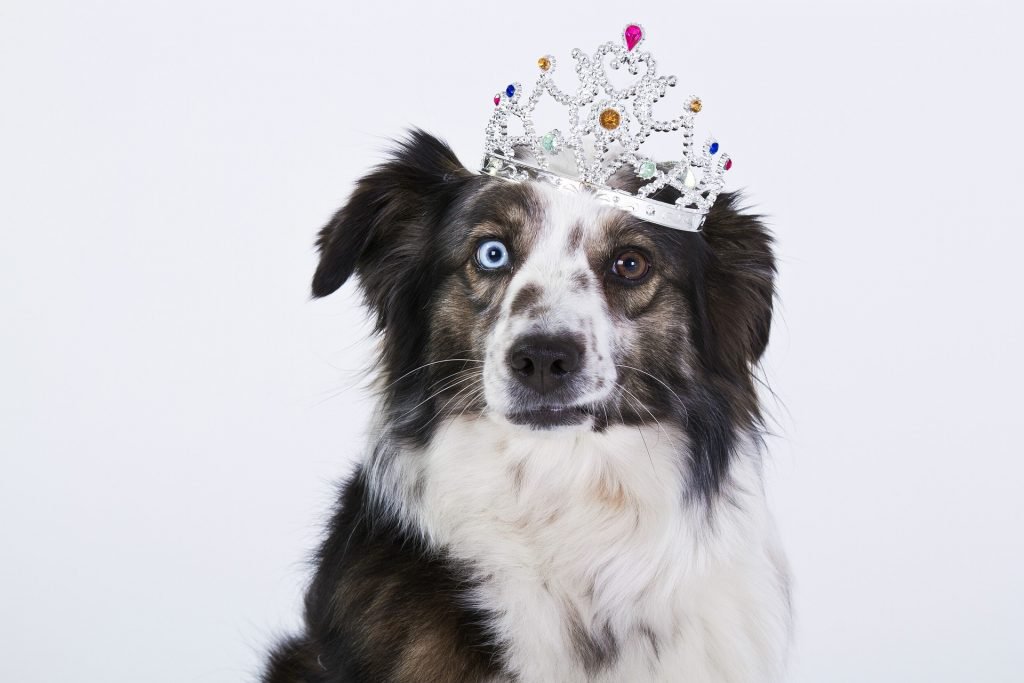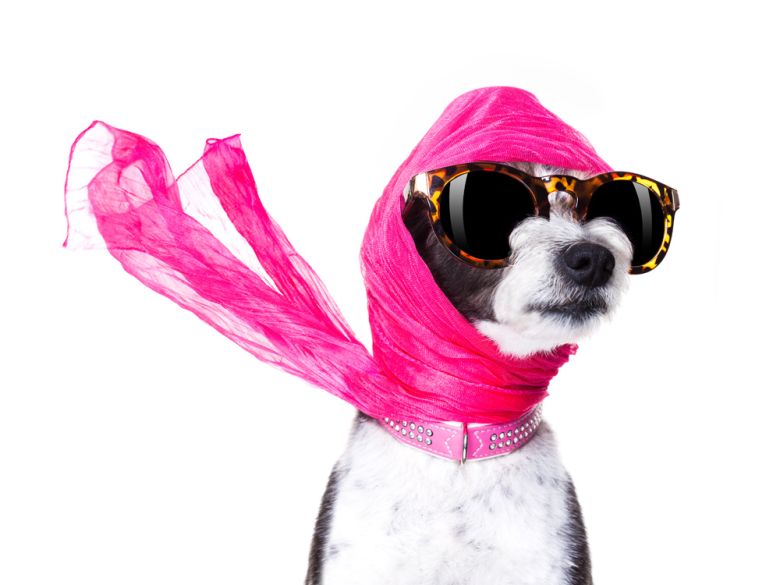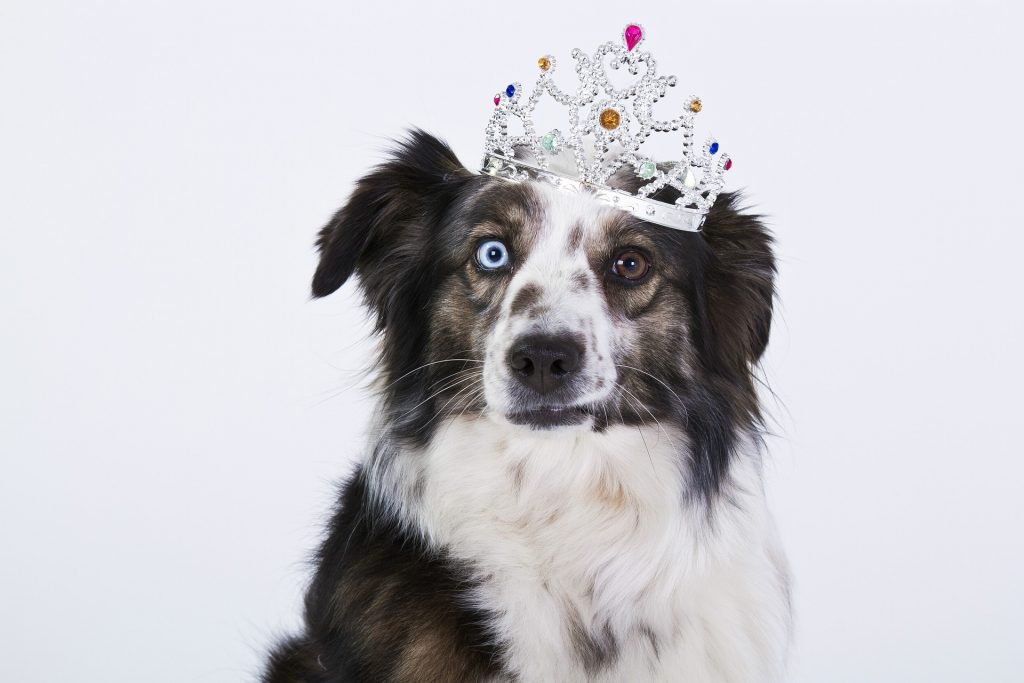Over the past few years, the “ designer dog ” trend has gained steam, as we’ve seen an increasing popularity of mixing all sorts of breeds together. But while the trend might feel new, it actually started all the way back in 1988 when Wally Conron crossed a Labrador Retriever and a Standard Poodle to create the first official “Labradoodle.”
Since then, the term “designer dog” has been picked up by the media to describe the offspring which come from a controlled attempt at cross-breeding two different types of purebred dogs. In turn, this has sparked a growing interest across the general population, leading to the popularization of a number of mixed breeds such as Maltipoos, Cockapoos, Puggles and many more from the ranks of designer dogs.
And in case you haven’t been able to tell just how big this trend is from walking down the street, here’s a fact to put it in perspective: the number of mixed dogs in Britain has increased eightfold over the past decade. No doubt, the same type of trend can be seen in a number of other countries across the globe as well -- particularly in the United States.
This ultimately raises two questions: First, why does the demand increase for designer breeds? And second, is it a good idea?
Trying to find the answers, I recently asked these questions on PetForums, a popular community for pet owners in the UK, and received nearly 200 responses. Before spiraling into a number of tangential arguments and discussions, a few common themes emerged directly addressing my original questions, which are summarized in this post below.
Increased popularity of designer dogs
While it may be clear who started the designer dog trend, it’s a bit more ambiguous how it grew to be as intense as it is now, with more than three times the number of designer dog “breeds” listed as pure dog breeds. But is it all just marketing “bull-shit” (Bulldog / Shi-Tzu mix)?
Here are the five most common answers I got from PetForums community members about what’s truly driving the popularity of designer dogs:
1. A desire to be unique and trendy
The most frequent answer as to what is driving the popularity of designer dogs ultimately boils down to the novelty factor. PetForums user labradrk describes this as “the ‘cute’ names” or “the idea of owning something ‘unique’ but that also has fashionable status.”

Another user, magpie, expands on this idea, writing, “People like to believe they have something ‘rare’ or unusual, so this leads to the breeding of more and more strange and often unsuitable crosses. It’s probably the same reason we seem to be seeing lots of different colors of pure-breeds these days too.”
In addition to this, it doesn’t help that a number of celebrities have taken to the trend, further popularizing the idea of designer dogs through their photos in the media. As an example, both Ellen Degeneres and Miley Cyrus have Maltipoos, Tiger Woods has a labradoodle, and Jake Gyllenhaal has a puggle. There are plenty of other examples, too.
This leads to another important point, which is best exemplified in an anecdote, also from magpie: “Sometimes people just see a dog that they like and want one the same… We ended up with a cockapoo because my mum knew someone who had one and fell in love with it. Years later my sister got a cockapoo because she fell in love with ours, and in the last year or so two of her friends have got cockapoos because they fell in love with hers!”
As this story shows, we, as humans, are often influenced by the things to which we are exposed. Thus, when we see a designer dog with our friends, or a celebrity in a tabloid magazine, we may be influenced to seek out the same type of dog. Conversely, it could spark a desire to get an even rarer designer dog mix due to our taste for all things “new.”
2. A need to fit certain lifestyles
A second response emphasized by many members of the PetForums community was that designer dogs have grown in popularity due to a demand for pets to better fit their owners’ lifestyles. For example, take Wally Conron’s Labradoodle, which was first created for a woman who needed a seeing eye dog, but whose husband had allergies…

In the same way, PetForums user Peggypegs argues that today’s most popular breeds are driven by both fads and the modern lifestyle. “People want smaller, lazier dogs because they have smaller houses and work long hours but still want a dog,” she writes. “Combined with people wanting to do as little grooming as possible while keeping the cute puppy look forever, they choose Pugs, Frenchies, Bulldogs and Poodle crosses.”
However, it’s also important to keep in mind that the desire to fit a certain lifestyle is nothing new. Another user, Burrowzig, reminds us that “Most if not all of the ‘pedigree’ breeds were designed for various purposes in much the same way as ‘designer’ crosses are now.” She adds, “Most dogs these days have the job of being a pet or companion so the dogs bred for hunting, herding, flock guarding or whatever aren’t what people are looking for.”
Rather, people with allergies are seeking dogs that don’t shed. People in small urban apartments are seeking out smaller dogs that don’t need as much exercise. And so on. Ultimately, as the demands of the modern lifestyle have changed, so too have the types of dogs being bred.
3. A disdain for pedigree dogs and snobby dog owners
Another common reason suggested for what is driving the designer dog trend is actually a growing disdain for pedigree dogs. In other words, a negative impression of purebred dogs and the culture surrounding them has caused many people to opt for mixed breeds like designer dogs over purebreds.

PetForums user Jamesgoeswalkies attributes this shift to “The general sway against Pedigree or Purebred dogs culminating in the TV program of the 1990s Pedigree Dogs Exposed.” He also notes that, as a result, “There was a terrific downer on buying KC Registered dogs for a long time.”
Thus, it’s important not to underestimate the role of the media. In the same way that people may be influenced to buy designer dogs when they see them in photos with celebrities, other people may be influenced to stop buying purebred dogs after seeing negative media coverage. This is what user ApolloStorm was hinting at: “I think [designer dogs] are so popular partially because of the disdain for pedigree dogs in the media, and partially from a total lack of knowledge and research about existing breeds that would fill in the gap -- and probably just as rare!”
Others believe the shift away from purebred dogs has to do with the culture of breeders: more specifically, “The impression that pedigree breeders are snobs and people are rebelling against the snobbery,” writes PetForums user Goblin.
User magpie adds the following point to the same argument: “It doesn’t help that it is SO hard to find good breeders, it is a total minefield and most people just don't know what to look for,” continuing that “people [don’t want] to jump through hoops for a puppy when there are an abundance of litters being advertised every day with no or very few questions asked.”
With that in mind, it’s easy to see how purebred dog breeders may be at least partially responsible for driving the designer dog trend themselves!
4. A handful of pervasive myths
In addition to the points above, designer dogs have grown in popularity thanks to a few pervasive myths -- namely, “the idea that they are healthier, that they shed less, and that they have more balanced temperaments due to the blending of genes,” writes labradrk. These are each ideas that have been perpetuated by the media, breeders looking to make a sale, and uneducated pet owners.

So, to address the myth that designer dogs are healthier, it’s first important to keep in mind that this is sometimes true -- something that we will look at in more depth at below. However, this is not the case across the board. In fact, one study suggests that purebred dogs are just as healthy as crossbreeds, despite their reputation otherwise.
The search for a hypoallergenic dog is another myth that has driven the designer dog trend. As mentioned previously, this is even one of the reasons the first Labradoodle was created! However, as James T C Li, M.D., Ph.D correctly points out in a post for Mayo Clinic, “There’s no such thing as a hypoallergenic dog breed, although some individual dogs may cause fewer allergy symptoms than others.”
Finally, the idea that designer dogs have more balanced temperaments due to the blending of genes may carry some truth as well -- but it’s simply not the case for every designer dog out there. This is evidenced by Jasper Rine’s Dog Genome Project, in which he crossed a Border Collie and a Newfoundland, and discovered that many of the temperamental or personality benefits are limited to first generation crosses. So considering that many designer dogs are not first generation crosses, the temperament argument goes out the window.
In an article describing the experiment, Stanley Coren PhD., DSc, FRSC summarizes this finding, writing, “If, for instance, the aim is to create a dog with a blend of the characteristics of the Labrador Retriever and the Poodle, this will only reliably occur in a first-generation breeding of purebred parents. Subsequent generations can be quite unpredictable in both temperament and physical characteristics.”
5. A culture of greed
A final common reason suggested for the growth of the designer dog trend involves money. Many purebred crosses sell for far more than the purebred dogs themselves. As such, this provides a strong incentive for “breeders” to mix breeds as a strategy to earn more. Coupled with this, marketing tactics such as inventing cute names for the crossbreeds and spreading the myths mentioned above can convince consumers to pay the higher price tag for a designer dog.

The ultimate question, however, is whether it’s the breeders or the consumers who are responsible. Surely, uneducated buyers have themselves to blame, but breeders who prey on this weakness are equally as culpable. Just as the desire for a “designer” dog may sometimes stem from a consumer’s greed and desire to have something unique and celebrity-like, perpetuating myths about these crossbreeds shows that breeders can be greedy as well.
Despite the reasons for why the designer dog trend has emerged, we must ask ourselves whether or not it is a good idea to continue. I know that purebred dog breeders are very loud and are against these mixes, but what do others have to say? And what do the facts tell us?
While I mentioned above a that purebred dogs are just as healthy as crossbreeds, there is other research that finds crossbreeds to actually be healthier. The resultsIs it a good idea to breed a designer dog?
Despite the reasons for why the designer dog trend has emerged, we must ask ourselves whether or not it is a good idea to continue. I know that purebred dog breeders are very loud and are against these mixes, but what do others have to say? And what do the facts tell us?
Arguments in favor of designer dogs

While I mentioned above a study suggesting that purebred dogs are just as healthy as crossbreeds, there is other research that finds crossbreeds to actually be healthier. The results of the study, aptly titled Prevalence of inherited disorders among mixed-breed and purebred dogs, can be broken down into three main findings. Of the 24 genetic disorders tested:
There were no differences in expression between purebred dogs and mixed breed dogs for 13 of the genetic disorders
Purebred dogs were more likely to have 10 of the genetic disorders
Mixed-breed dogs had a greater probability of one genetic disorder
These results go to show that designer dogs can in fact be healthier than purebred dogs. But again, this is contingent upon many factors, including the types of breeds that are crossed and whether or not the crossbreeds are first generation. Referencing the study, PetForums user Goblin thus argues that “health cannot be simply dismissed as a myth,” adding, “There’s a reason genetic diversity is encouraged.”
Another user, mrs phas, argues in favor of crossbreeding, writing, “The only crossbreeding I would support is for health reasons. For example, maybe a serious team effort in improving the lives of Pugs, Frenchies, Boston’s et al. Or with Mastiff breeds, no more melting neos, English Mastiffs that can run for miles, Bullmastiff weight and breathing problems…, breeding Boxers whose hearts don’t explode. Those sort of cross-breedings are important; breeding for cuteness and money are just, in my honest opinion, immoral.”
But while breeders can do their part to help solve certain health problems for dogs, many argue that it is a shared responsibility with dog buyers. Dogloverlou, for example, says, “Do I begrudge people buying/wanting a designer dog? Not at all. But as long as the same amount of time and consideration goes into choosing a good breeder as it does any other breed.”
This, however, seems to be a common problem, as many designer dogs are crossbreeds of dogs that have the same types of diseases -- highlighting that a lack of time and consideration is going into the decision to both create and purchase a designer dog.
Another user, SpicyBulldog, suggests that major organizations have stifled the acceptance of crossbred dogs. “I definitely support responsible cross / mix breeding, including outcross projects. It has been successful with Dalmatians and some people are working on Doberman, but getting parent clubs and kennels clubs behind such things can be difficult even when done responsibly and trying to save a breed by reducing serious health issues and lack of diversity.”
Nevertheless, at the end of the day, the fact remains that the argument is a bit of a moot point. “Most people with pedigree dogs have them purely for companionship, meaning they chose their breed because they wanted one. Same as the person who wanted a cockapoo. But one of these is supposed to be the morally superior choice?... Crossbreeding in itself shouldn't be a bad thing, except maybe for the fanatical breed purist,” writes picaresque.
Arguments against designer dogs

Despite the solid arguments above, with over 350 FCI and AKC recognized dog breeds (called purebreds) already, it’s still hard to understand the deeper benefits and purpose to the designer dog trend. So what are some of the arguments against it?
One of the biggest criticisms in response to my post has to do with the uneducated consumer. PetForums user leashedForLife shares an anecdote that from the first appearance of a Labrador cross with a Poodle on the TODAY Show, it was just 90 days before the first dog of that mix ended up in his local municipal shelter. She goes on to say, “Let’s face it, pet-dog buyers are often sloppy and lazy they take statements by the breeder or seller as factual rather than as sales-pitch, do virtually no research, and often fall for a photo of a darling puppy.”
Understanding this to be true, the argument against designer dogs is essentially that many people purchase one without really understanding what they are getting themselves into. Ultimately, this leads to a lot of unhappiness for both the dog buyers and the dogs themselves.
For this reason, magpie writes, “I actually agree that there is too much cross breeding going on, and unfortunately often with two completely incompatible/unsuitable breeds and rarely with any health tests done. And there are a lot of people buying dogs (both mixes and pure breeds) without doing their research first.” Still, she follows up by writing, “I don’t see anything wrong with [designer dogs], so long as [people] do their research and make sure that what they want is suitable for them, and also find a good breeder.”
The health argument is one that PetForums user Biffo also addresses, demonstrating that unscrupulous breeding practices with designer dogs could end up causing problems. “The Russian Black Terrier, created from the cross breeding of many breeds in the 1950s, including Newfie and Rottweiler, has inherited the health problems of both breeds,” she writes. “There is no reason a cross breed will be healthier than a pedigree.”
That said, it is clear that the issue of designer dogs is two-fold, involving both unprepared owners and irresponsible breeders. If people are prepared to work around the characteristics of the crossbred dog, and breeders are careful with which breeds they decide to cross, the consensus seems to be that the designer dog trend isn’t such a bad thing after all.
Bottom line
Ultimately, the designer dog trend has emerged and grown in popularity for a number of reasons -- though not all of them are exactly ethical. Thus, while breeding and purchasing designer dogs is not necessarily a bad thing in and of itself, care must be taken to avoid some of the common pitfalls and issues mentioned above -- particularly with regard to the dogs’ health.
PetForums user O2.0 reminds us that “Simply crossing two breeds doesn't create health, but purposefully breeding two dogs who compliment each other, who come from long lines of healthy stock without hidden issues in the lines (that you know because you are keeping up with that pedigree) does.”
As such, user Goblin writes, “It’s time people stopped concentrating of health as a marketing device. Health is important and I’m not saying we should not concentrate on the well being of the dogs themselves, simply stop using it for marketing. For new owners the priority is we need to ensure they do their research.”
So what does this mean if you’re thinking about buying a designer dog? Here’s a great answer from Dog Breed Info:
“When you breed two different types of purebred dogs together you can get any combination of any of the characteristics found in either breed. If you are stuck on a hybrid dog how do you know which one to choose? Read the temperament and care for both breeds in the cross and be prepared for any combination of the two. If everything about both breeds matches your and your family’s personality and lifestyle, then you can most likely assume this cross will work for you. If there is ANYTHING about either breed in the cross that you do not feel matches what you are looking for, avoid that cross. Do not assume or take the chance that only the good characteristics will emerge. You may be in for a big surprise and it is not fair to the puppy to chance that.”
This all goes to show that, at the end of the day, it’s important to keep in mind that everything -- including breeding practices -- evolves. Burrowzig points this out, noting the differences between the show and working varieties of dogs like Cockers and Border Collies. She goes on to predict that “In a couple more hundred years all the Labradoodles, Cockerpoos or whatever -- I have no doubt -- will be established breeds.”
So, will the designer dog trend live on? Only time will tell -- but for now the answer appears to be “Yes!”
“In a couple more hundred years all the Labradoodles, Cockerpoos or whatever -- I have no doubt -- will be established breeds."
"...designer dogs can in fact be healthier than purebred dogs."
NOTE: Quotes from the PetForums post have been edited for grammar, style and readability.



